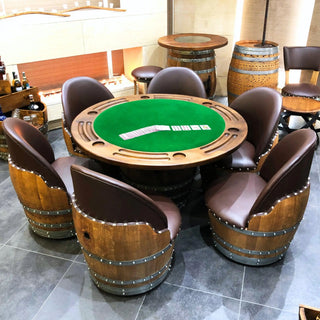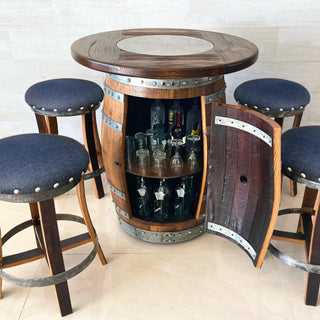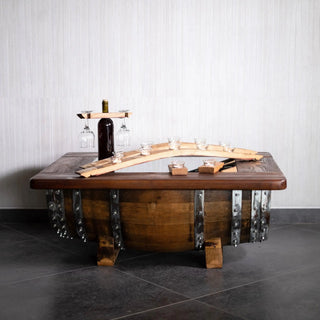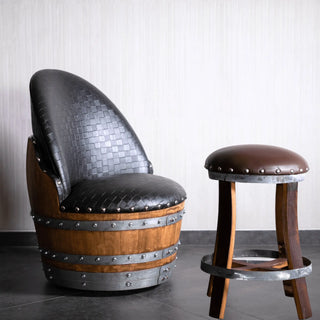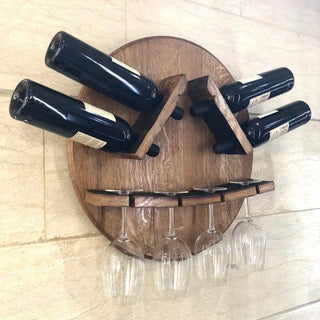
Aging Methods Are Important
Oak Wood Barrels vs. Stainless Steel Tanks
As wine enthusiasts, we are all aware of the critical role that aging and storage play in producing the delicious wine that we consume. The wine's flavor, aroma, and general quality can all be significantly impacted by the choice of aging container. Wood barrels and stainless steel tanks are two of the most popular options for aging wine, but what are the distinctions between them and what other options are there?
Let's start by discussing the conventional process of aging wine in wood barrels. Due to its distinct qualities that make it the ideal material for aging wine, oak is the most typical wood used for wine barrels and has been for centuries. Because oak is porous, some oxygen can pass through the barrel, which is essential for the aging process. The vanilla, spice, and toasty aromas of the wood are absorbed by the wine as it ages in the oak barrel. One of the reasons why oak is so highly regarded for aging wine is because this adds to the complexity and depth of the wine. Additionally regulating the wine's temperature and humidity, oak barrels are strong and long-lasting.
Contrarily, aging wine in stainless steel tanks is a more contemporary technique. These containers are made of a non-reactive metal that has no impact on the wine's flavor or aroma. Furthermore, stainless steel tanks allow for easier temperature and humidity control, making wine aging more precisely controlled. Wines aged in stainless steel tanks typically have a fruitier and cleaner flavor profile with less barrel influence.
Use of clay jars, amphorae, or concrete eggs is another method of wine aging. Since these substances, like oak, are porous, some oxygen can pass through and interact with the wine. While clay jars are primarily used to age red wine and add a mineral element to the wine, concrete eggs and amphorae are frequently used to age white wines and add a textural element to the wine.
It's important to remember that there are no hard-and-fast rules when it comes to wine aging; ultimately, the decision is up to the winemaker and depends on the type of wine they want to make. However, the aging process is subject to rules in some wine regions. For instance, in the Bordeaux region, wine must first undergo a specific aging process in oak barrels before it can be designated as a Bordeaux wine.
In conclusion, each wine aging technique, whether it be in stainless steel tanks, wood barrels, or other containers, has specific benefits and drawbacks. In the end, it comes down to personal preference and the type of wine the winemaker wants to make. You can better appreciate the subtleties and complexity of the wine you are drinking if you are aware of how the various techniques differ from one another.
Let's start by discussing the conventional process of aging wine in wood barrels. Due to its distinct qualities that make it the ideal material for aging wine, oak is the most typical wood used for wine barrels and has been for centuries. Because oak is porous, some oxygen can pass through the barrel, which is essential for the aging process. The vanilla, spice, and toasty aromas of the wood are absorbed by the wine as it ages in the oak barrel. One of the reasons why oak is so highly regarded for aging wine is because this adds to the complexity and depth of the wine. Additionally regulating the wine's temperature and humidity, oak barrels are strong and long-lasting.
Contrarily, aging wine in stainless steel tanks is a more contemporary technique. These containers are made of a non-reactive metal that has no impact on the wine's flavor or aroma. Furthermore, stainless steel tanks allow for easier temperature and humidity control, making wine aging more precisely controlled. Wines aged in stainless steel tanks typically have a fruitier and cleaner flavor profile with less barrel influence.
Use of clay jars, amphorae, or concrete eggs is another method of wine aging. Since these substances, like oak, are porous, some oxygen can pass through and interact with the wine. While clay jars are primarily used to age red wine and add a mineral element to the wine, concrete eggs and amphorae are frequently used to age white wines and add a textural element to the wine.
It's important to remember that there are no hard-and-fast rules when it comes to wine aging; ultimately, the decision is up to the winemaker and depends on the type of wine they want to make. However, the aging process is subject to rules in some wine regions. For instance, in the Bordeaux region, wine must first undergo a specific aging process in oak barrels before it can be designated as a Bordeaux wine.
In conclusion, each wine aging technique, whether it be in stainless steel tanks, wood barrels, or other containers, has specific benefits and drawbacks. In the end, it comes down to personal preference and the type of wine the winemaker wants to make. You can better appreciate the subtleties and complexity of the wine you are drinking if you are aware of how the various techniques differ from one another.
Interested in shopping for wine barrel furniture? You can browse our full collection of items ranging from coffee tables to home bar and game sets here!
www.obarrel.com/collections
www.obarrel.com/collections

